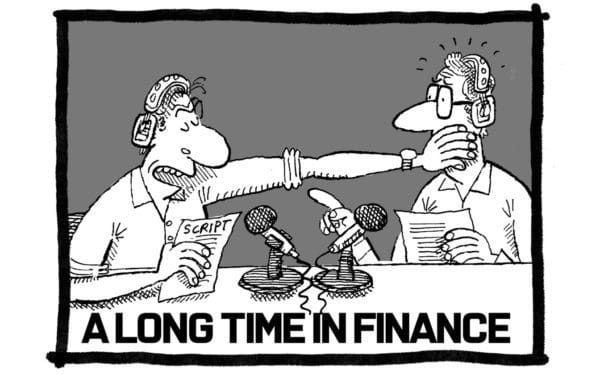In four weeks’ time the Bank of England is likely to raise UK interest rates for the first time in ten years. The Bank’s Governor, Mark Carney, has gone out of his way to signal that a rate rise is on the cards. Financial markets and economists are betting that the Bank’s Monetary Policy Committee will hike by 25 basis points at their 2nd November meeting, taking UK interest rates up to 0.5%.
Other central banks are also edging away from ultra-easy monetary policy, with America leading the way.
The Federal Reserve has raised US interest rates from 0.25% to 1.25% over the last two years. Later this month the Fed will start unwinding its Quantitative Easing (Qprogramme. Canada raised rates in July for the first time in seven years. The European Central Bank is a lot further from raising rates, but it is upbeat about prospects for euro area growth and later this month will announce how it plans to unwind its programme of QE.
The Fed and the Bank of England have shared motives for raising rates. Asset prices and consumer borrowing look frothy in the UK and US. Both countries are more than eight years into their recoveries. Raising rates now hardly seems premature and would provide headroom for future rate cuts when, as is inevitable, recession strikes again. Wage growth is subdued, but unemployment in most of the Anglophone world is at historically low levels, pointing to future inflation risk.
In the UK Mr Carney argues that Brexit is likely to slow UK productivity, weaken sterling and raise inflation pressures.
The tilt towards tighter monetary policy brings with it new risks. The 2008-2009 monetary easing bolstered liquidity, asset prices and credit. The unwinding of easy monetary policy should have the opposite effect.
For asset markets which have become accustomed to cheap money this could be the moment of truth. In the UK and US housing, equities and bonds look demandingly priced. As the current edition of the Economist puts it, there is a bull market in everything. The US Nobel Laureate in economics, Robert Schiller, estimates that on an underlying basis US equities are more expensive today than at any time since the dotcom bubble and, before that, the 1929 crash. An index of equity market volatility, the VIX, is close to a 25 year low, suggesting a level of optimism that, to some, borders on complacency.
Cheap money has helped reboot growth and has raised household debt in advanced and emerging economies above 2008 levels. Yet growth rates for GDP and household incomes are still below pre-crisis norms. Asset valuations, and the ability of households to cope with debt, seem dangerously dependent on low interest rates. Last week Warren Buffett said that equity valuations would look cheap in three years’ time if interest rates were one percent – but not if they were three percent.
Central banks understand the vulnerabilities and will work very, very hard to avoid a crash. That points to a softly, softly approach to raising interest rates and unwinding Quantitative Easing. Policymakers can take comfort from the fact that the Fed’s campaign to tighten policy, which has seen interest rates rise by 1.0% in the last couple of years, has not derailed asset prices or growth.
The Fed wants to avoid a repetition of the “taper tantrums” of 2013, when financial markets, especially in emerging economies, reacted negatively to reports that US rates were about to increase. The unwinding of US QE, which is set to start this month, is likely to be prolonged, extending beyond 2023, possibly by several years.
The Bank of England has said it will not start unwinding QE until UK rates have risen to levels from which they could be “cut materially”. That implies rates of at least 3.0%, which looks some way off.
If the Bank raises rates on the 2nd November it is likely to portray the move as the removal of the precautionary, 25bp rate cut, made last July following the EU referendum. Slowing UK growth, Brexit-related uncertainties and falling inflation, suggest further rate rises will come only gradually.
Financial markets have bought into the idea of slow tightening and see UK base rates, which currently stand at 0.25%, ending this year at 0.5% and 2018 at 1.0%. The market is pricing in US rates of 1.5% by the end of this year and 2.0% by the end of 2018.
The hope is that it a gradual unwinding of easy monetary policy will avoid a sharp fall in asset prices. The fact that institutional fund managers see equities as overvalued and are buying protection against declines shows that not everyone is counting on a happy ending.



